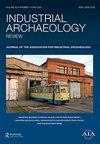The Installation of Electric Bells and Telephones at Hatfield House: Lord Salisbury’s Adoption of Communication Technologies in the Later 19th Century
IF 0.1
4区 历史学
0 ARCHAEOLOGY
引用次数: 0
Abstract
ABSTRACT This article explores the installation of electric bells and internal communication telephones at Hatfield House, Hertfordshire, by Robert Gascoyne-Cecil, 3rd Marquess of Salisbury, well known for his fascination in all aspects of science and new technology. The installation process of these pioneering new technologies at Hatfield House, their location within the house, how they functioned and their probable impact on the household are investigated through surviving correspondence, receipts, plans and the physical evidence preserved within the house. When identified, recorded and interpreted, this evidence can contribute to our greater understanding not only of the early adoption of technology in the 19th century, but of the complex way that two separate but interdependent groups of people (employers and servants) lived, worked and communicated in a great country house, while maintaining distance, privacy and the division of rank.哈特菲尔德庄园安装电铃和电话:19世纪后期索尔兹伯里勋爵对通信技术的采用
摘要本文探讨了索尔兹伯里第三侯爵Robert Gascoyne Cecil在赫特福德郡哈特菲尔德庄园安装电铃和内部通信电话的情况。这些开创性的新技术在哈特菲尔德之家的安装过程、它们在房子里的位置、它们的功能以及它们对家庭的可能影响,都是通过幸存的信件、收据、计划和房子里保存的实物证据进行调查的。当被识别、记录和解释时,这些证据不仅有助于我们更好地理解19世纪技术的早期采用,还有助于我们更深入地理解两个独立但相互依存的群体(雇主和仆人)在一座伟大的乡间别墅中生活、工作和交流的复杂方式,同时保持距离、隐私和等级划分。
本文章由计算机程序翻译,如有差异,请以英文原文为准。
求助全文
约1分钟内获得全文
求助全文
来源期刊

Industrial Archaeology Review
Multiple-
CiteScore
0.40
自引率
66.70%
发文量
26
期刊介绍:
Industrial Archaeology Review aims to publish research in industrial archaeology, which is defined as a period study embracing the tangible evidence of social, economic and technological development in the period since industrialisation, generally from the early-18th century onwards. It is a peer-reviewed academic journal, with scholarly standards of presentation, yet seeks to encourage submissions from both amateurs and professionals which will inform all those working in the field of current developments. Industrial Archaeology Review is the journal of the Association for Industrial Archaeology. Published twice a year, the focal point and common theme of its contents is the surviving evidence of industrial activity.
 求助内容:
求助内容: 应助结果提醒方式:
应助结果提醒方式:


